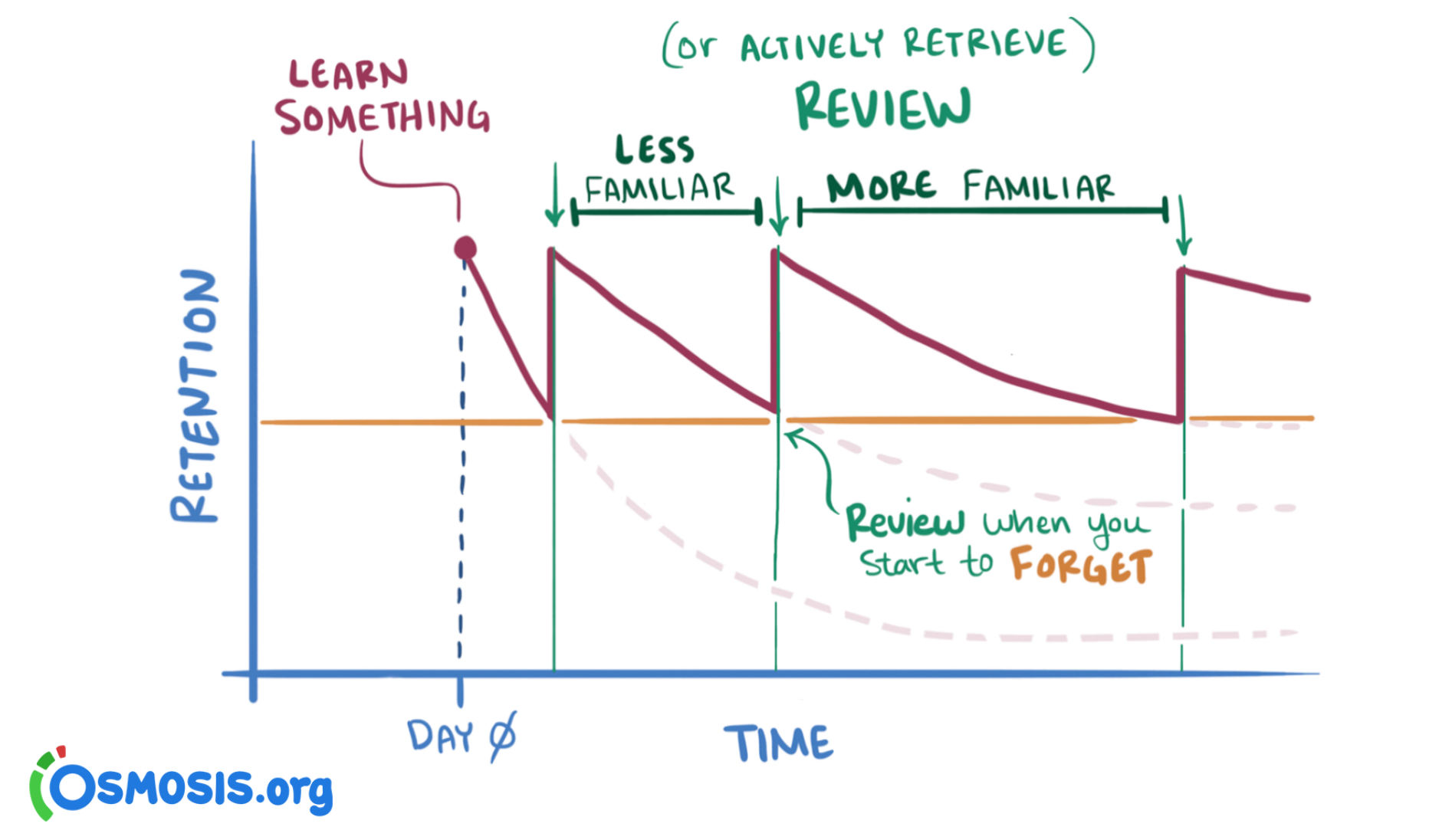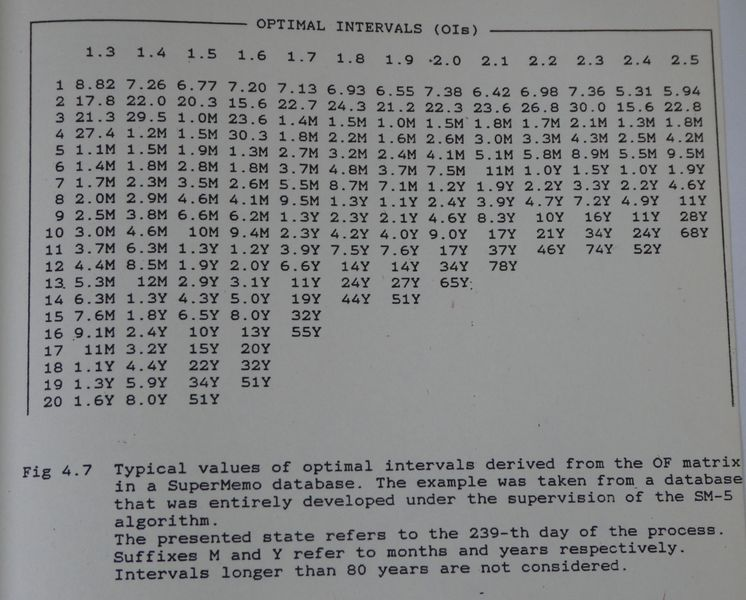#concept-pamphlet #todo: review these too, continuing on the 3 day article
-
RMSE
-
HLR
-
to add to Probability & Statistics

fsrs combines ____ with ____ ? machine learning techniques, universal memory formulas what is fsrs? >> Free Spaced Repetition Scheduler algorithm. It is an open source algorithm.
what is the purpose of any spaced repetition algorithm? ? To help learners efficiently form long-term memories.
How do spaced repetition intervals differ with different levels of familiarity? ? Shorter intervals are used for unfamiliar material while longer ones are used for familiar material.
What is the role of automation/algos in spaced repetition? ? They automate tracking of memory states and efficient scheduling of reviews
What is the primary limitation of the SM-0 algorithm? ? It uses a page of notes as the unit for review, making it unsuitable for tracking memory retention at a more granular level
Why did Wozniak use new materials each time he sought to establish a new review interval in his experiments? ? To ensure uniformity in the intervals of prior reviews.
What are the advantages of breaking material down into smaller parts, for the SM-2 algorithm? ? It allows the algorithm to find the right schedule for each individual piece of information.
What is a primary difference between SM-0 and SM-2 algorithm, besides the fact that SM-2 uses bite-sized QA pairs? ? SM-2 also uses Ease Factor and grades.
What’s the primary difference between SM-2 and SM-4 algorithm? ? SM-2 algorithm doesn’t account for the whole lifetime of the card. SM-4 has a matrix to represent the whole memory lifetime of a card.
In SM-4, what is the main idea, practically speaking w.r.t. reviews behind Optimal Interval matrix?
 ?
The main idea is that if the OI matrix says to wait X days and learner actually waits X+Y days and still remembers with a high grade, then the OI value should be changed to something between X and X+Y.
If the learner can remember something after waiting X+Y days and get a good score, the old OI value was probably too short! :p
Rows = how easy the material is
Columns = how many times you’ve seen it.
This matrix is continuously updated during reviews.
?
The main idea is that if the OI matrix says to wait X days and learner actually waits X+Y days and still remembers with a high grade, then the OI value should be changed to something between X and X+Y.
If the learner can remember something after waiting X+Y days and get a good score, the old OI value was probably too short! :p
Rows = how easy the material is
Columns = how many times you’ve seen it.
This matrix is continuously updated during reviews.
stability in the DSR model >> time required for the probability of recall for a particular memory to decline from 100% to 90%
retrievability in the DSR model >> probability of recalling a specific memory at a given moment
difficulty in the DSR model >> the inherent complexity associated with a particular memory
what are the 3 components in the 3 component model of memory? >> stability, retrievability, difficulty/complexity
In spaced repetition algo,
is… ? Initial interval after the first review
In spaced repetition algo,
is… ? Stability increase (SInc). Ratio of successive intervals, from the i-th interval and the preceding (i - 1)th interval
What is this equation
?
Retrievability of any given memory at time t.
This accounts for spaced repetition algorithms and memory models.
What are some advantages of FSRS vs. SM-2 Anki? ?
- 20-30% fewer reviews than with Anki’s default algo
- better at schedulign cards with delays
What is one way you can think about a memory event in probabilistic terms? ? A memory event is a single random experiment with only 2 possible outcomes and its success probability equals retrievability
What is considered a reasonable % retention to set for SR? ? 70-97% retention